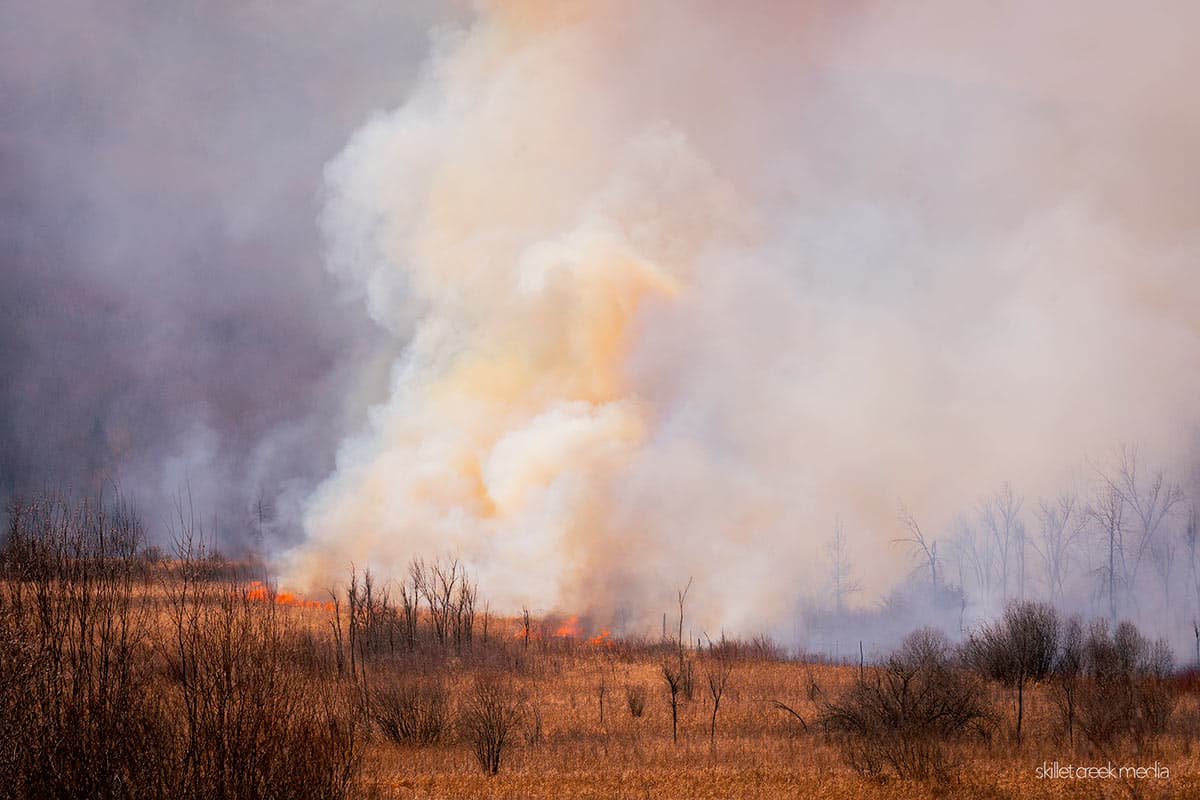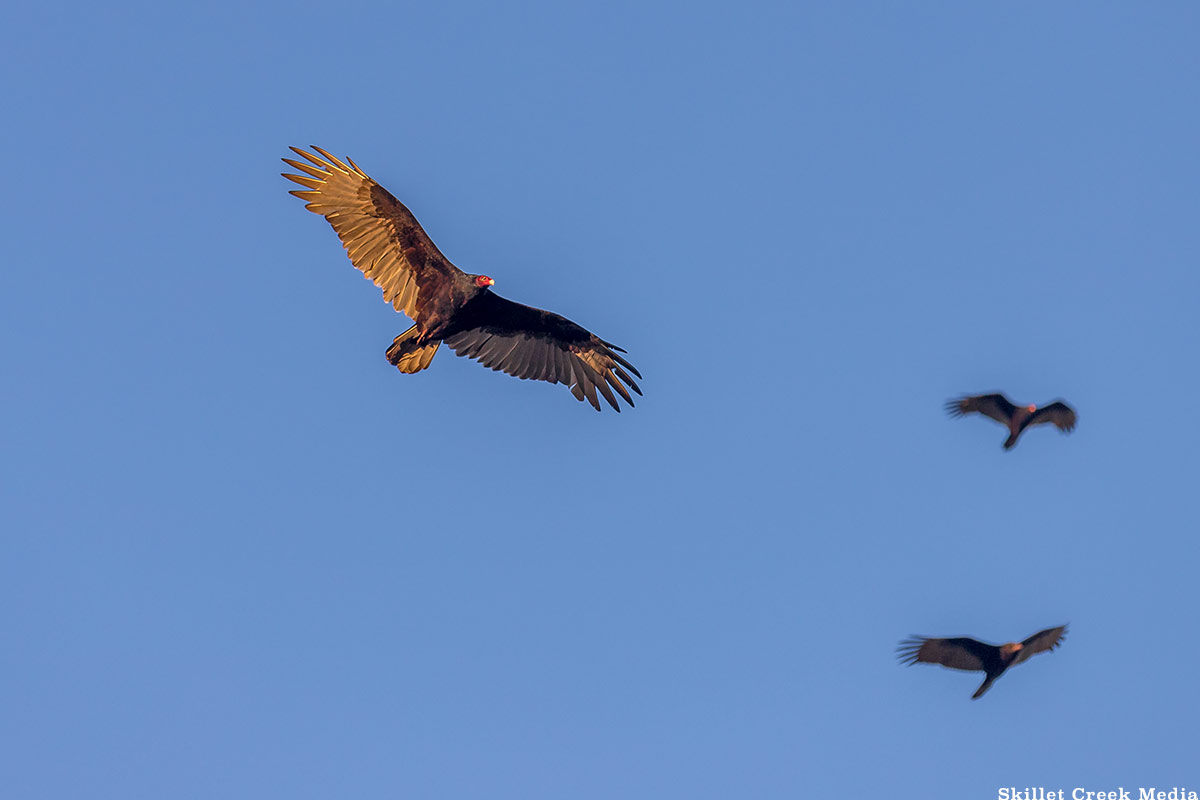Yesterday, March 18th, a prescribed burn was carried out on Devil's Lake State Park's Roznos…
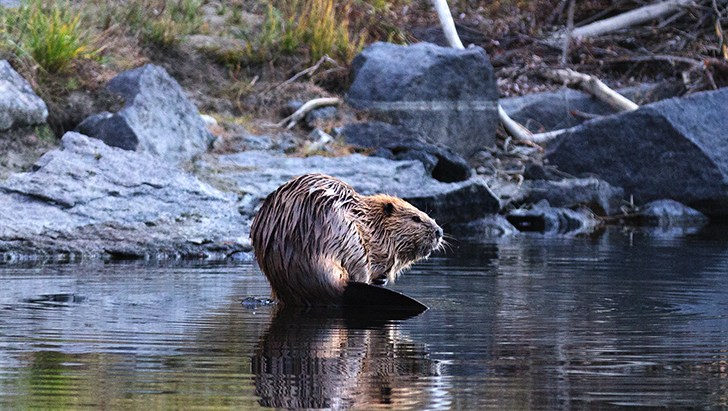
May was American Wetland Month. That got me thinking about the wetlands within Devil’s Lake State Park and how they’ve changed or disappeared just since I started this website some 21 years ago. When thinking about the park’s wetlands I began wondering where all the beaver went?
On the southwest corner of Devil’s Lake, there once was a large healthy wetland at the base of what we call Messenger Creek. Seeps and springs from atop the south bluff fed the creek, which in turn fed the wetlands before escaping to the lake. Messenger Creek is the lake’s only inlet. Even after being divided by the creation of South Shore Road around a hundred years ago, the wetland was home to a huge variety of wildlife and wetland plant species, many rare and endangered today, and all held together by the work of our local industrious beavers.
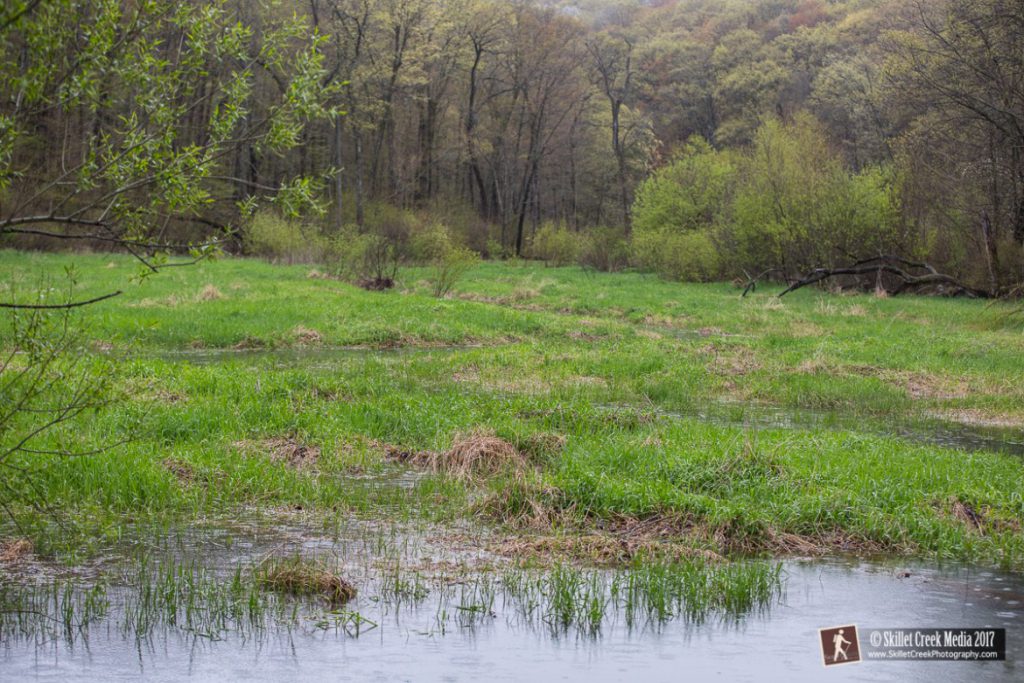
Today we realize that beavers are often the foundation of healthy wetlands. Their dams create deep water pools which are an excellent habitat for many creatures from wetlands birds like Sandhill Cranes and ducks to reptiles and insects. Wetlands also slow flooding which has become a real issue at Devil’s Lake. What’s more, researchers in the UK found that the “water leaving a beaver wetland is around three times cleaner than the water entering it”. (Good for the lake that we love to fish and play in!) When beaver are removed, the water turns stagnant and the wetland, along with its benefits, disappear. Often what remains today are fields of invasive plants such as Reed Canary Grass. With no healthy habitat and no food sources, the diversity of life disappears. You can see this when you drive past Messenger Creek. It is now a single deep channel of water flowing through a desert of invasive Reed Canary Grass. The wetland and the diversity of wildlife are gone.
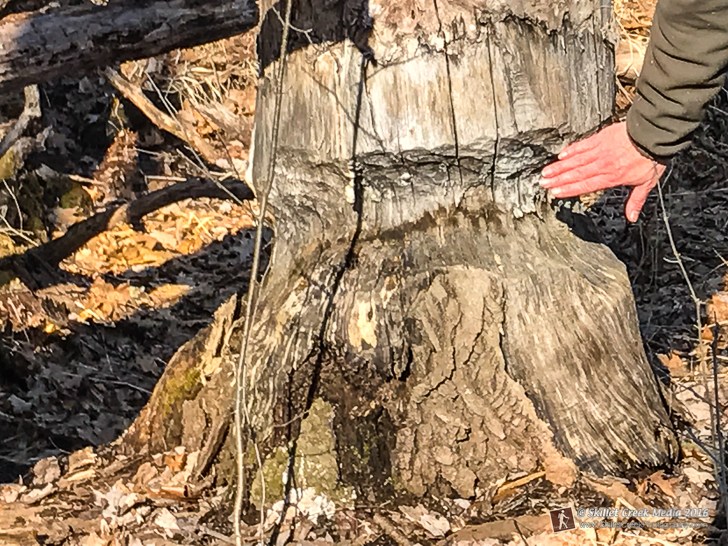
So Where Did The Beavers Go?
Well, many years ago when I worked at the park, there were beavers living at least 3 locations that I know of. I used to go watch the beavers that lived on Messenger Creek. It was a great opportunity to observe their industrious work. They were not shy. They were used to the traffic along the road and they built their dam just feet away from the road. The culvert that allowed the creek to flow under South Shore Rd., made a perfect pinch point for the dam builders. The downside to the beaver’s chosen location is that they often would block up the culvert and cause water to flood over the road! Beavers are great dam builders but with little understanding of human transportation! Back in the day, it was common to hear the rangers stories of spending the day removing the beavers or going out to blow up their dams.
Back then, live trapping was the method of choice. We were told that the beavers were simply moved out to Steinke Basin where they were free to go on with their lives. However, it was a temporary solution. It seems either the same beavers or new ones kept returning. They would when you think about it, you can’t simply introduce new beavers into another area where beavers already existed. They would have no option but return or find a new location. The stream that flows from Steinke Basin would lead them back to the lake and eventually return them to Messenger Creek.
That was the back and forth that went on some time back in the 90s. Now long after I left the park, something changed. In chatting with some folks who’ve been around for awhile, I’m told that eventually the beavers were no longer relocated, but exterminated. This seems troublesome since the DNR itself offers all sorts of non-lethal management options, so killing them should have never been considered. I’d hope that wasn’t the case.
Have they been trapped out? Not in Messenger anyway, I’m pretty sure trapping wouldn’t be allowed in this location. But whatever actually happened, it is obvious today that in some time less than 20 years, the beavers disappeared.
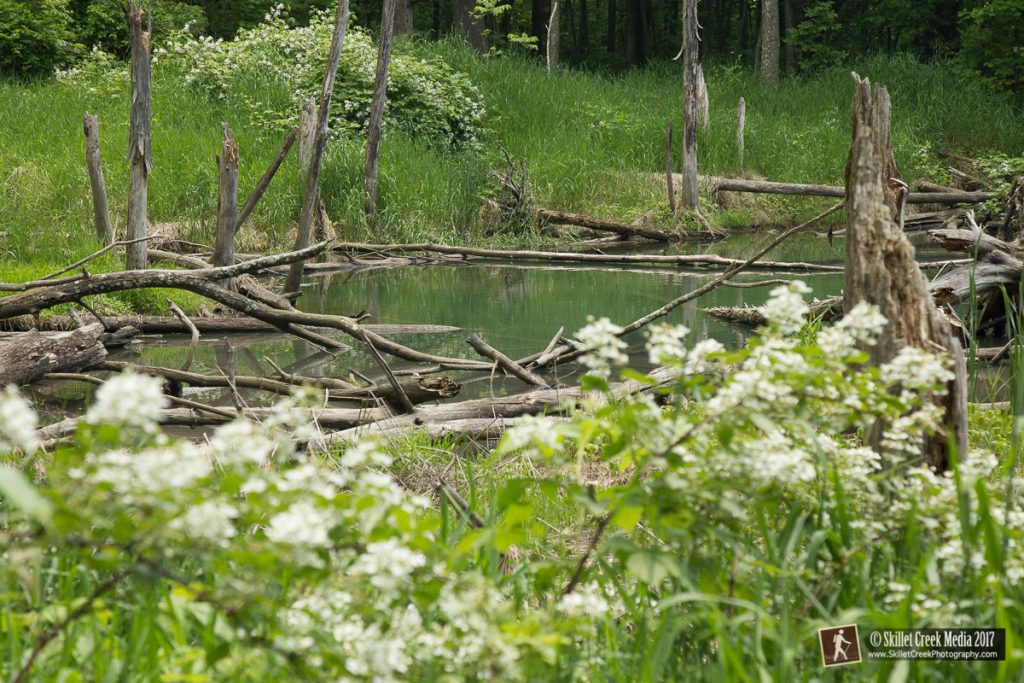
Do We Need The Beavers?
We actually need the beavers in the park. Messenger Creek is today nothing more than a well of invasive Reed Canary Grass as I’ve mentioned. On Steinke Basin, the wetlands are filling in with Cattails, Reed Canary Grass, and invasive Honeysuckle. A third wetland on the south bluff seemed to have had a beaver population until recently but is now filling in as well. The only sign of the beavers who lived there is a big dam and some amazingly ambitious beaver chews! The park’s wetlands are not doing well and it’s practically impossible for humans to restore them on their own. The beavers, however, can.
Returning beavers to the park has the potential of returning the balance. In the process of building new dams and new homes, they would restore the wetland habitats our park once had. And it’s not just about the wildlife! Allowing the beavers to rebuild the Messenger wetland will slow currents after heavy downpours so common these days, distribute sediments that otherwise rush into the lake and help mitigate the flooding that we now have to manage with pumps and a drain pipe!
Can We Live With Beavers?
Certainly. Scientists have a pretty good handle on not only the importance of beavers in the wild but their management as well. All over the US and the UK beavers are being reintroduced. We know now that the folks who killed beavers to manage them had no idea or weren’t concerned about how they were going to change the environment. Now we have to repair the damage they have done.
There are many methods available in a situation like the one at Devil’s Lake State Park where the beavers were blocking up the culvert. The first is simply helping the beavers decide where to build. Without going too far into detail, beavers are attracted to the sound of trickling water, it’s a signal to build or repair their dam. Using this knowledge many options are available to tell the beavers where to build while keeping them away from the culvert. Culverts can also be protected and we can even run pipes through beaver dams to maintain flow and avoid the flooding problem altogether! These days, we have the solutions to living with beavers while letting them do the environmental restoration work for us!
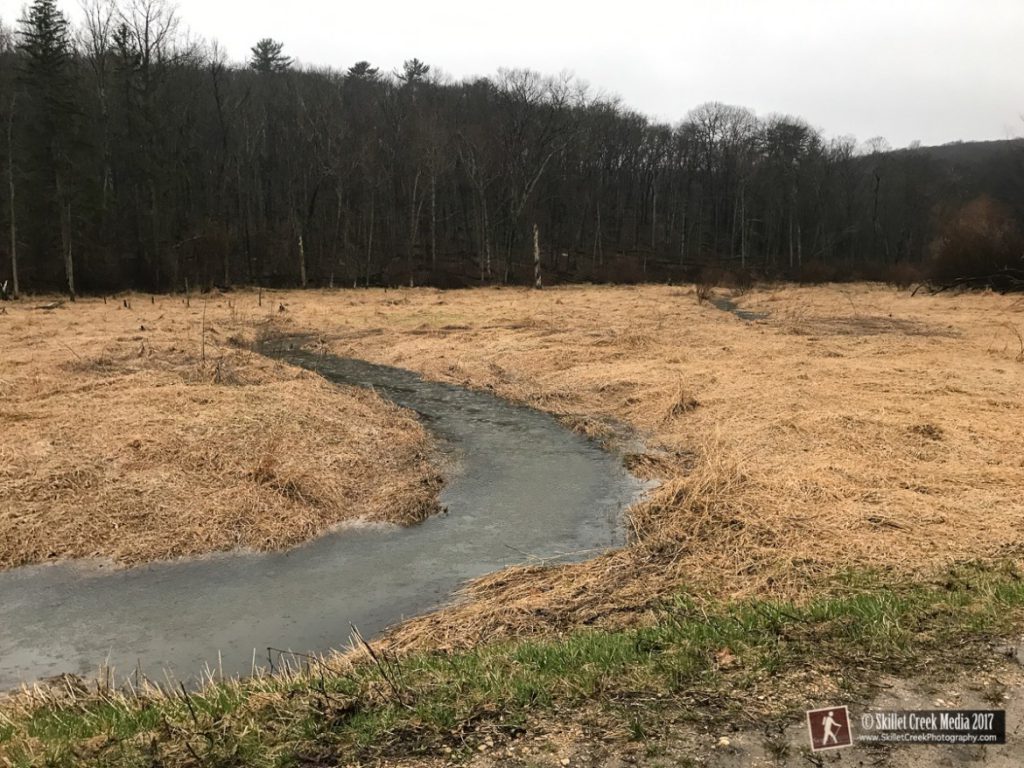
A Message From Messenger
Ever since the 1800’s when Europeans started “settling” the lake, we have been degrading this unique location, often unintentionally, but steadily. It was only through years of activism that a park was established in 1911 to protect Devil’s Lake and the surrounding bluffs for everyone. It took even more effort to finally close the quarries, remove the buildings and efforts were made to restore the water quality. But we’re not done. We still have to examine our actions and priorities. We cannot cram in visitors at the expense of the environment those same visitors are here to experience. It often feels that the park’s natural environment and wildlife are given no quarter in the hunger to create more human (and pet) spaces along the water.
Today the lake is surrounded on all sides. Wildlife access to suitable shoreline has always been limited due to geography, and ever-more-so due to human activity. The southwest corner of the lake around Messenger Creek was the last “oasis” for the park’s wildlife, providing quieter and safer access to a shallow shoreline where they could hunt and fish. But we’ve been taking it away. By removing the beavers, we destroyed the wetland south of the road. Next, we built a boat landing and a parking lot that have removed protective cover while increasing traffic, pollution, human noise and movement in the area many times over. Then most damagingly, the park designated an off-leash pet swim area at this same location! Loose dogs and wildlife don’t mix as any national park will tell you!
This is how the slow march of time works. Step by step, drip by drip we are encroaching, degrading and destroying the environment around Messenger Creek, the last wildlife-friendly corridor between the lake and the hills that surround it. Like a frog in the frying pan, few seem to notice. Without someone focused on the park’s environment & wildlife policing administrative decisions, it’s bound to continue.
Wildlife Is Important Too
Devil’s Lake State Park is more than picnic areas, boat landings, and beaches. The lake and the surrounding bluffs are an integral part of the Baraboo Hills, a renown, and unique natural area here in central Wisconsin. We are obligated to do what we can to protect, maintain and restore the environment whenever and wherever we can. We cannot simply take the easy way out and blame budgets or politics. Sometimes, it’s just a matter of calling out a problem, then working with others to do the right thing. The work of restoration didn’t stop with a drain pipe in the lake. Among the many tasks ahead we need to return the beavers that have always been integral to the park’s environment. Restoring the beaver population will bring back our wetlands, clean the water & help mitigate flooding while recovering some of the diversity of plants and wildlife that are every bit as important to Devil’s Lake State Park as a clean campsite and on-site law enforcement.
Learn More
- Invasive Reed Canary Grass – Wisconsin Wetland Association
- Beavers and people, making it work.
- Playing Tricks on Beavers Puts a Stop to Beaver Dam Flooding
- Beavers Are Back in the UK and they will Reshape the Land
- Reintroduced Beavers In England Help Protect Against Floods And Soil Erosion
- How To Keep Beavers From Plugging Culverts
- Beaver Solutions
- Preventing Beaver Dams From Blocking Culverts
- Beavers & Wetlands
- Why are wetlands important?
- Beaver Management in Wisconsin: Past, Present and Future

For nearly 2 decades the Skillet Creek blog has focused on 3 main goals; To inspire you to visit and explore the Devil’s Lake region, to help you get the most your visit by sharing tips, events, and other helpful information. Lastly to advocate for our environment & wildlife and talk about how we can keep our natural areas amazing now and into the future! That last goal can sometimes cause controversy, but it’s the only way we can accomplish the first two. – Derrick Mayoleth, Owner.

